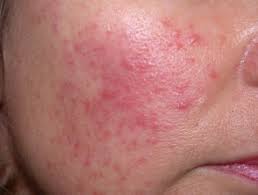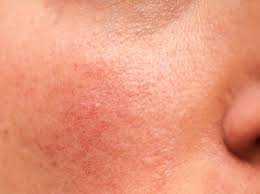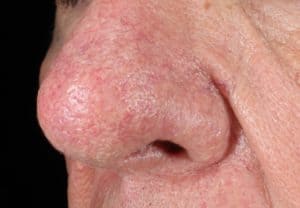Rosacea
As someone who suffers from Acne Rosacea, I’ve battled with skin confidence and the trials and tribulations that come with that – to wear foundation or not to wear? To cover with concealer or let my skin breath? Over the years I have learnt that sadly, my skin can and will flare up at any moment, but I’ve also learnt what I can do to reduce the severity of these flare ups and maintain my overall skin health so it is better able to deal with inflammation.
Rosacea is a chronic condition of which there are four types- papulopustular (or acne rosacea- distinguishable from acne vulgaris by lack of comedones or “blackheads” and a red, rashy appearance), Erythematotelangiectatic, which is the typical red, flushed skin with visible dilated vessels, while Phymatous Rosacea is characterised with thickened, lumpy skin, enlarged pores and a nodular appearance (often called Rhinophyma when present on the nose). The fourth kind is a lesser known and less commonly diagnosed Ocular Rosacea which causes redness, bumpiness along the lash line, irritation or a granular feeling in the eye, red, swollen eyelids, blocked eyelash follicles and a tendency towards infections such as conjunctivitis. It is often found in those who suffer from another form of rosacea in the skin.
The exact cause of this common skin condition is unknown, though is it closely related to a sensitivity towards or an over abundance of the demodex mite- a parasitic and mostly innocuous mite which lives naturally in human skin and feeds on oil secretions. Demodex mites live within the hair follicle, feeding directly from the oil gland located alongside the hair. In small populations, these mites cause no harm with most people totally unaware of their presence, but in a sensitised skin, or in the case of overproduction, these little mites and their naturally occurring bacteria (Bacillus oleronius) can lead to irritation, inflammation, heat, redness and pustules.
In order to prevent bacterial overgrowth and excess sebum production (which feeds the mites), we first need to address skin barrier functions. It is relatively easy for a skin therapist to determine compromised barrier function. There are many things which lead to barrier damage, including a history of acne or excessive sun damage, over cleansing the skin, use of peroxides on the skin, excessive scrubbing or excessive use of chlorinated pools. Due to these reasons, when dealing with rosacea, we often need to address a client’s lifestyle as well as clinical and topical cosmeceutical care. The first thing I do is ensure we are feeding and supporting the acid mantle- a good, gentle cleanser, Vitamin b3, vitamin b5 and a probiotic is a great starting point, as the combination b vitamins help build skin resiliency by healing and thickening the barrier and holding water within the skin. When the skin barrier is weakened, it makes the client more susceptible to Trans epidermal water loss (TEWL), which is when environmental heat or humidity binds with the skin’s natural water and evaporates it away. If you have a nice, strong, healthy barrier, it prevents this water escaping. Once your skin is less dehydrated, it won’t need to produce as much oil, so you’ll provide less food for your mites. By introducing a gentler, pH balanced cleanser, we don’t break down this crucial ceremide barrier and ensure we’re washing away excess sebum gently and effectively to prevent build up. Probiotics are introduced to help introduce good bacteria to the skin and counteract the Bacillus oleronius which have been shown to create an inflammatory, histamine reaction in some people.
 |
Aspect Dr’s Multi B assists in protection and balancing of skin’s natural functions with three different B vitamins. |
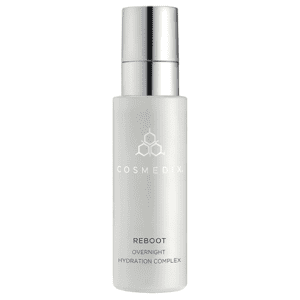 |
Cosmedix reboot provides much needed hydration and calming alongside lactobaccilus to balance skin’s microbiome. |
We also need to then address potential irritants or triggers. Are people using an occlusive foundation which is rich in oil or blocking their pores? Has the client been applying alcohol-based toners? Have they got a sulphate based cleanser? Are they stripping back the skin with harsh scrubs and peroxides? How often does someone clean their makeup brushes? Do their blushes or highlighters contain talc or bismuth oxychloride? More often than not, clients have inadvertently exacerbated this condition is attempts to keep it under control or hide it, so we often need to dial right back and treat our skin gently and give it time to heal and rebalance itself.
Once we have worked on balancing and preserving barrier function, we need to address protection in the form of oil free, pure mineral sunscreens. As rosacea is an inflammatory condition, we know UVA and UVB will exacerbate this by causing damage to the dermis. We can also assist inflammation by the use of zinc which calms skin and encourages the healing process. We also recommend introducing further protection by use of an antioxidant to further address inflammation and help to protect compromised, sensitive skin. Vitamin C is a great option for this, as it is also known to assist in collagen production and strengthen damaged, weakened capillary walls.
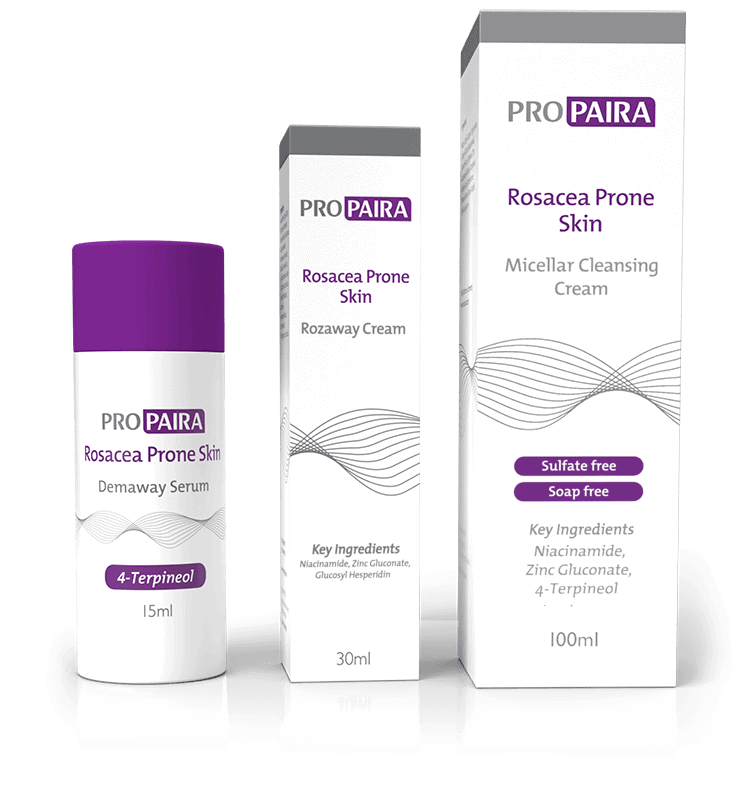
Once we have diagnosed rosacea, we unfortunately cannot “cure” it. We can offer clinical care such as Red and Infrared LED therapy to heal lesions and soothe discomfort, as well as Blue light to kill bacteria. When we see visible dilated vessels or excessive flushing, we offer IPL to target and reduce enlarged blood vessels. The heat and light from IPL can also help to kill mites and bacteria. These clinical options generally require a course and must be maintained with consistent good quality homecare. In severe cases, a topical or oral antibiotic may be advised, or GPs can offer a topical pesticidal ointment- these options still require consistent homecare and will not cure or prevent the condition from potentially recurring.
If you have any questions regarding persistent breakouts, inflammation or redness or would like some information on your options, please feel free to book a consultation with our skin therapist.
